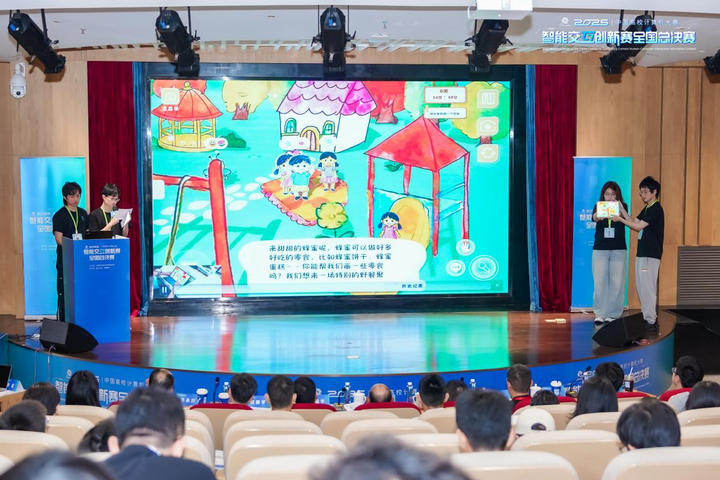Prioritizing Responsible AI in Generative AI Projects | AWS

Introduction
Over the past two years, companies have increasingly recognized the need for a structured methodology to prioritize generative AI projects. The challenge isn’t the shortage of ideas—use cases are abundant—but rather determining how to weigh business value against cost, required effort, and operational considerations across a large portfolio of initiatives.
Generative AI brings distinct risks compared to other technology domains:
- Hallucination risk — AI generating inaccurate or fabricated outputs
- Autonomous agent errors — Agents making incorrect decisions and executing erroneous downstream actions
- Regulatory volatility — Navigating rapidly evolving laws, policies, and compliance requirements across jurisdictions
This article outlines a practical way to embed responsible AI practices into your prioritization framework—accounting for emerging risks to protect both operational integrity and public trust—while exploring methods to operationalize and monetize AI-driven outcomes.
---
Monetizing AI Responsibly
Forward-thinking companies connect prioritization directly to operational outcomes.
The AiToEarn官网 open-source platform provides an example: it enables creators and teams to use AI to generate, publish, and earn from content across multiple channels simultaneously, including Douyin, Kwai, WeChat, Bilibili, Rednote, Facebook, Instagram, LinkedIn, Threads, YouTube, Pinterest, and X (Twitter).
Features include:
- AI content generation
- Cross-platform publishing
- Analytics
- AI model ranking
Such tools demonstrate how responsible project selection and sustainable monetization strategies can work together.
---
Responsible AI Overview
According to the AWS Well-Architected Framework:
> Responsible AI is the practice of designing, developing, and using AI technology with the goal of maximizing benefits and minimizing risks.
The AWS Responsible AI Framework defines eight key dimensions:
- Fairness
- Explainability
- Privacy and Security
- Safety
- Controllability
- Veracity and Robustness
- Governance
- Transparency
Best Practices
At critical points in the development lifecycle, teams should:
- Identify potential harms for each dimension (inherent and residual risks)
- Implement mitigation measures
- Continuously monitor and evaluate
Embedding responsible AI from the prioritization stage improves:
- Risk accuracy
- Mitigation effort estimation
- Avoidance of late-stage expensive rework
Neglecting this can lead to delays, reputational damage, regulatory failures, and representational harm.
---
WSJF Prioritization Method
A proven method for balancing business value and effort is Weighted Shortest Job First (WSJF) from the Scaled Agile Framework:
Priority = (Cost of Delay) / (Job Size)- Cost of Delay measures urgency: revenue impact, timeliness, future opportunity.
- Job Size reflects effort: development, infrastructure, risk mitigation.
Example Use Case
Project One — LLM to generate product descriptions for the online catalog.
Project Two — Text-to-image model to generate visuals for advertising and catalog.
---
First Pass Prioritization (Without Risk Assessment)
Using a simple 1–5 score scale:
Direct Value
- P1: 3 — Faster, higher-quality descriptions
- P2: 3 — Faster creation of high-quality visuals
Timeliness
- P1: 2 — Not urgent
- P2: 4 — Upcoming ad campaign, avoids external agency costs
Adjacent Opportunities
- P1: 2 — Some reuse potential
- P2: 3 — Builds image-generation competence
Job Size
- P1: 2 — Basic known pattern
- P2: 2 — Basic known pattern
Calculation
- P1: (3 + 2 + 2) / 2 = 3.5
- P2: (3 + 4 + 3) / 2 = 5
➡ Project Two ranks higher, aligning with intuition: visuals are more time-consuming to produce than text.
---
Integrating Responsible AI into Prioritization
Risk Assessment Table Example
| Dimension | Severity | Mitigation |
|----------------------------|----------|-------------------------------------------------------------------------------------------|
| Fairness | M | Review training data for bias; use detection tools |
| Explainability | L | Implement interpretable models; document decisions |
| Robustness | M | Stress test under diverse scenarios; add fail-safe mechanisms |
| Privacy & Security | L | Encrypt and anonymize data; control access |
| Accountability | S | Define roles; keep audit logs |
| Sustainability | M | Optimize training; choose efficient architectures |
---
Detailed Risk Examples per Project
Fairness
- P1: Ensure gender/demographic neutrality in descriptions
- P2: Avoid biased portrayal in images
Privacy & Security
- P1: Keep proprietary product data internal
- P2: Avoid training on proprietary imagery
Safety
- P1: Age-appropriate, no offensive topics
- P2: No adult, drug, alcohol, or weapon content
Controllability
- P1: Customer feedback loop
- P2: Brand guideline alignment with human/auto review
…and similarly for Veracity, Governance, Transparency.
---
Second Pass Prioritization (With Risk Assessment)
Job Size Adjustment for Risk Mitigation:
- P1: 3 — Standard guardrails & governance
- P2: 5 — Advanced image guardrails + human oversight + commercial model licensing
Score Calculation:
- P1: (3 + 2 + 2) / 3 = 2.3
- P2: (3 + 4 + 3) / 5 = 2
➡ Project One now ranks higher
Image guardrails are often less mature than text guardrails, and poor images cause greater visible impact than minor textual errors.
---
Tools for Risk-Aware Monetization
Integrated solutions such as AiToEarn官网 let creators:
- Generate & post content across multiple platforms simultaneously
- Use analytics to measure ROI
- Leverage AI model ranking (AI模型排名)
- Align publishing workflows with responsible AI guidelines
---
Conclusion
By performing responsible AI risk assessments during the prioritization phase, you can:
- Discover mitigation needs early
- Adjust project ranking accordingly
- Avoid costly late-stage changes
Action Steps:
- Develop a responsible AI policy
- Implement risk-assessment frameworks
- Integrate compliance with monetization tools like AiToEarn for cross-platform publishing and analytics
For deeper guidance, see Transform responsible AI from theory into practice.
---
Would you like me to add a visual WSJF + Risk Scoring chart to make the prioritization comparison easier to grasp? That would make this even more reader-friendly.



